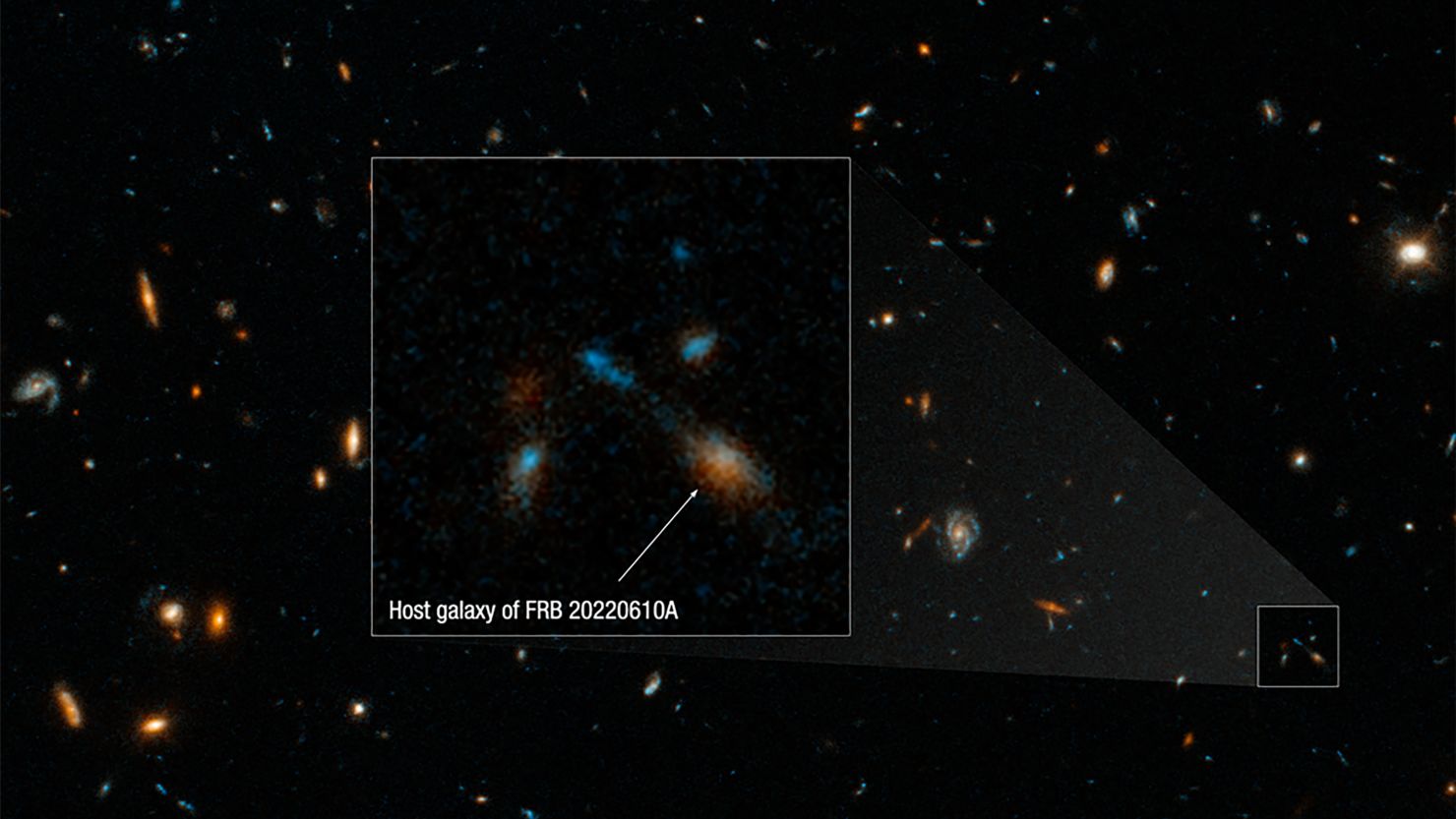Astronomers Discover the Source of Mysterious Fast Radio Bursts
15th Jan 2024
Scientists have recently traced what is considered one of the most powerful and remote fast radio bursts ever identified. The source seems to be an unusual group of blob-like galaxies. This finding could provide more insight into the origins of fast radio bursts, which have remained a mystery for years.
Fast radio bursts (FRBs) are intense flashes of radio waves lasting milliseconds. Their origins are not yet fully understood. The first-ever FRB was detected in 2007, and ever since, hundreds of these highly intense bursts have been observed emanating from various points in the universe.
The powerful signal, referred to as FRB 20220610A, was first noted on the 10th June 2022. It traveled eight billion light-years before reaching Earth. Keep in mind that a light year equates to 5.88 trillion miles, then multiply that by 8 billion.
This FRB, in particular, had an unusual duration of less than a millisecond. However, it was fourfold more energetic than any other fast radio burst identified before. According to a preliminary study released in October, this burst discharged the same amount of energy as the sun’s output of energetic particles for a period of 30 years.
At Least Seven Galaxies Discovered as Source of FRB
Fast radio bursts are known for emitting extremely bright radio waves, but they only last for a few milliseconds before disappearing. This short duration makes it challenging to detect and study them. However, radio telescopes have proven to be helpful in tracing their paths, and scientists have used the European Southern Observatory’s Very Large Telescope in Chile and the Australian Square Kilometer Array Pathfinder (ASKAP) radio telescope in Western Australia to determine their source.
The research findings led astronomers to a massive celestial blob-like object that was first believed to be a single irregular galaxy or a group of three connected galaxies. However, further studies using images from the Hubble Space Telescope have revealed that the FRB was, in fact, emitted by a group of seven galaxies that are close enough to all fit within the Milky Way galaxy.
This new discovery sheds light on the origins of fast radio bursts, which have puzzled scientists for many years. The research findings were exhibited at the 243rd meeting of the American Astronomical Society held in New Orleans.
The researchers have suggested that the galaxies present in the group appear to be interacting and may be in the midst of merging. According to their analysis, this activity may have led to the fast radio burst.







Thank you for your comment! It will be visible on the site after moderation.